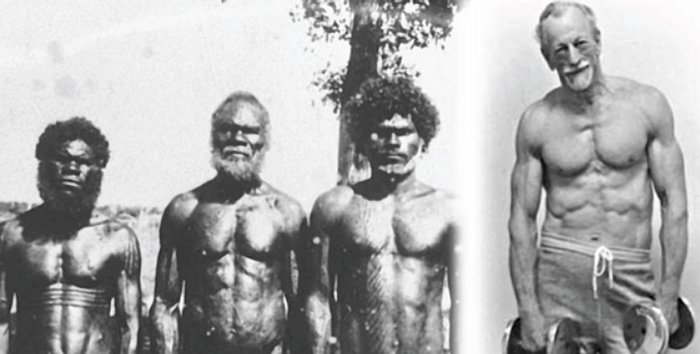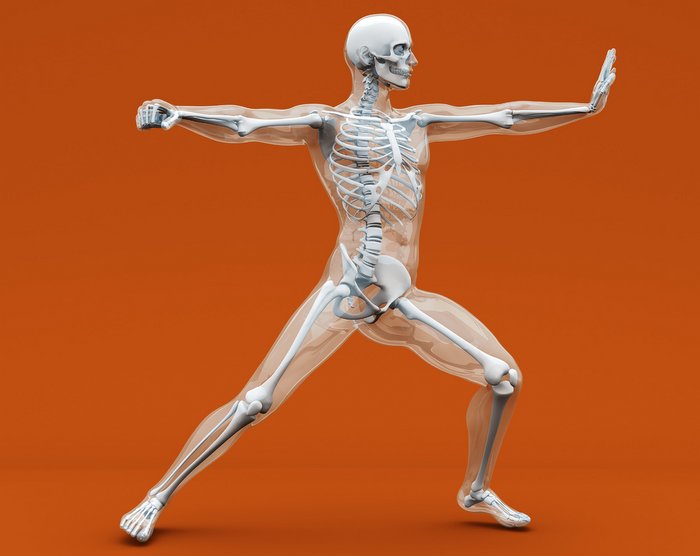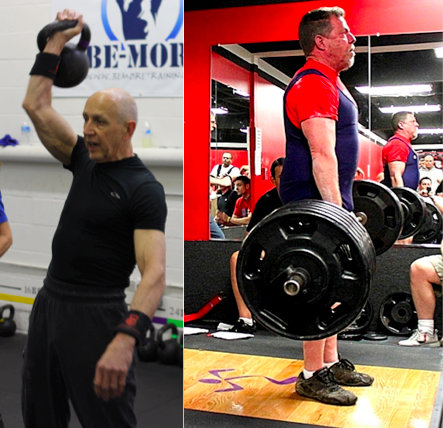If we look at the physical aspects of frailty as discussed in Part 1 of this article, it is evident that the strength, mobility and stability of the musculoskeletal system declines as we age. Exercise is the only remedy for this. There is no pill you can take to move better or become stronger. With the proper training, movement and physical strength can be restored, and maintained, at any age. If you are young, consider strength training as part of your retirement planning. If you are old, better get started now.
This article will discuss some of the basic activities of daily living (ADLs) and exercises that best support them. The exercises can be scaled to be appropriate for anyone, regardless of their current physical condition.
Rising from a seated position to standing (and vice-versa) and walking are foundational ADLs. We will assume that our hypothetical trainee can stand and walk, but not much more (injured or wheelchair bound individuals will be discussed in another article). From a strength coach’s perspective, we want to strengthen and improve the ADLs of the sitting to standing transition as well as walking. Squats are the most high-yield exercise to achieve this goal. “Bad knees” and “bad backs” are the most common reasons trainees give to avoid squatting. Properly instructed squats with thoughtful progressions can often surmount these obstacles and get an aging trainee squatting safely and pain free.
Many older trainees may have been told by their physicians (who most often have no strength training background) that they should never squat. It is probably a safe bet that their doctor has not told them that they should never get out of a chair or rise from the toilet seat. Squatting is a fundamental movement for these crucial daily activities. The best starting exercise to train standing from a seated position in senior fitness circles is called “chair stands” (“box squats” in powerlifting).
Box squats allow for this important movement to be performed at varying ranges of motion. Typically, the greater the depth of a squat, the more strength, mobility and stability are tested. A lack of any one of those things could compromise how deep a person could and should squat. For the lowest functioning individuals, we will use double stacked chairs and do bodyweight squats; for the high functioning individuals, we will do full squats with added weight.
Case Studies:
Mrs. Ethel was a 92 year old woman with severe kyphosis (aka hunch back). She walked using a walker with her head looking straight down. Her posture was so bad that when you passed her in the hallway she had to turn to the side to look up at you. Mrs. Ethel could barely stand even from a double-stacked chair, so that’s where we started. She was challenged to not use her arms to assist, to stand a little taller at the top of each rep and descend under control (no “plopping”). A sticky note was placed on the wall in front of her to look up at, and it was gradually raised higher over the course of her program. She would probably never stand completely upright again but we countered the effect gravity was having on her with simple cues like “stand tall” and “look up”. As her leg strength increased we moved to a single chair (lower starting position); first allowing use of the arms for assistance and then without. With 20 repetitions being her “max” she never needed an additional load.
Compare this to Mr. Frank, a 85 year old man who exercised regularly since he left the military 50 years ago. He could squat to below parallel and his range of motion was limited only by arthritic knees and his preference for biceps curls instead. He could also maintain proper form under a load. Although shoulder mobility might prevent him from holding a barbell behind his back as in a true powerlifting squat, dumbbells and kettlebells could be held as a front or goblet squat. Mr. Frank has more options available to him for progression as he could safely increase weight, repetitions and on good days even try to go lower (albeit with less weight).
By squatting deep and with a load, we can improve the strength, mobility and stability qualities required to stand up and walk. Appropriate squat depth and load will vary significantly with each individual. It is helpful to remember the concepts of hormesis and allostasis covered in the beginning of Strong Medicine when deciding on the proper “dose” for squatting. With these concepts in mind, proper dosing can be successfully prescribed by the fitness professional well-versed in squatting mechanics (see Marty Gallagher’s previous article on the squat for a master class). The squat is a basic human movement that you will need to do for the rest of your life if you plan to be independent into old age. Performing this exercise regularly will not only maintain strength, but also develop both the mobility and stability that is crucial for preventing frailty.
The other exercise that translates extremely well to ADLs for the senior is the deadlift. This deadlift is one of THE best cures for osteoporosis. The deadlift and the partial deadlift allow for heavier loads to be used to maximize bone density and prevent muscle wasting. Deadlifting is a pure strength movement that can be scaled to the senior population. This lift is based on the hip hinge movement and contrary to idea that deadlifts are “bad for the back”, a proper deadlift can rehabilitate a weak back. Neurosurgeon Patrick Roth, M.D. prescribes a kettlebell deadlift as part of his spine rehabilitation program in his excellent book The End of Back Pain.
There is a deadlift variation that is appropriate for anyone. For some a load is not appropriate at first, but everyone should be taught the hip-hinging movement central to the deadlift. Arguably, the hip hinge should even be taught before the squat, especially considering that squatting “starts” at the hips.
Another benefit to the deadlift is that it has a shorter range of motion, making it safer for more people. It is also a less technical movement, making it easier to learn. A good coach can teach the hip hinge and tell when individuals are ready to progress. Again, progressions can be made in the form of additional load or greater ROM. As a rule, I use where the wrist falls on the body during the exercise to determine where people can safely pull from. If technique can be maintained to a point where the crease of the wrist passes the knee for instance, then the trainee can pull from there. Setting up at this height will allow for a 2-3 inch “buffer” so the lifter is not pulling from his/her end-ROM.
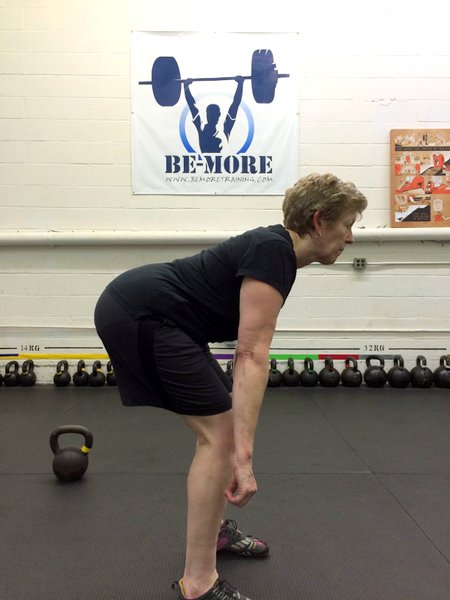
A brief note on set up.
Any powerlifter reading this will know how to set up a power cage for rack pulls. To pretty much everyone else reading this those last few words are foreign, especially to your average 60+ year old exerciser. This is unknown territory that can be downright frightening to some people. Fortunately there are machines that allow set up for partial deadlifts with adjustments as simple as pressing a button. Many senior centers are equipped with pneumatic or computerized machines to allow user friendly solutions to older adults. Unfortunately you will see few “racks” in these centers. We can speculate on why that is the case (i.e. liability, funding, misuse, lack of qualified personnel, etc) or we can make a call to action for fitness centers to offer deadlifting options. The importance of real weight bearing exercise to combat sarcopenia, osteoporosis and frailty syndrome cannot be overstated. Partial range of motion deadlifts must be made available to the population who are at most at risk if we are to reinforce our position against frailty. If this means expensive equipment or powerlifting coaches posted by the powercages in every senior center, so be it. The cost of equipment is minimal and justified by the potential for improving the quality of life and avoiding catastrophic injuries such as hip fractures from falls.
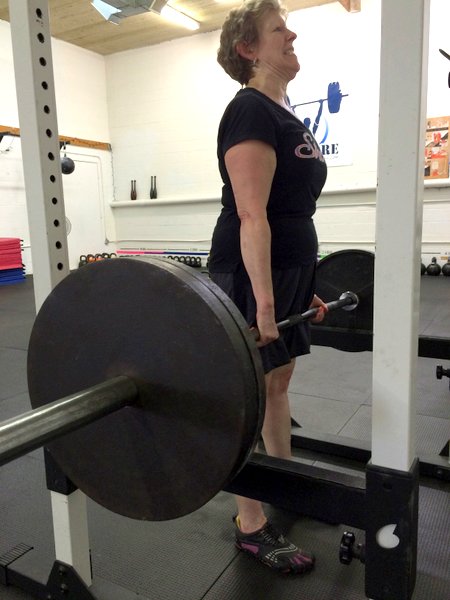
Aging is a process that we all face. Strength training is a necessary component to aging successfully, but we need effective methods. So much of senior fitness boils down to the end goals of standing tall, and standing strong. We need the right balance between mobility and stability, and for most of us, strengthening the posterior and stretching the anterior. When properly programmed, the squat and the deadlift address the core activities of daily living for the senior. These two exercises alone give people a simple approach to not just exercising, but improving the quality of their lives. Humans are meant to lift weight and load their bodies. If we can get more intersection and synergy between the powerlifting community and the retirement community, geriatric health and senior fitness will flourish.
****
Dan Cenidoza, BS, CSCS is a personal trainer, professional strongman and owner of Art & Strength in Baltimore, Maryland. He has a degree in exercise science and specializes in kettlebells and strength & conditioning. His mission is to instruct and inspire people to live stronger, healthier lives. artandstrength.com facebook.com/artandstrength
